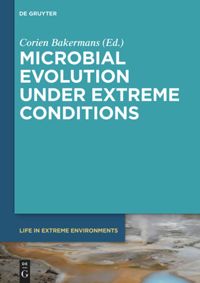
Astrobiology on the International Space Station
Jean-Pierre de Vera
Springer, 2020, English
This volume on astrobiology on the International Space Station (ISS) from the Springer Briefs in Life Sciences book series addresses the three fundamental questions about the origin, evolution, distribution and future of life in the universe: How does life originate and evolve? Does life exist outside the Earth and, if so, how can we detect it? What does the future of life on Earth and in the universe look like? The book provides insights into astrobiological experiments carried out on the International Space Station and discusses their results.

Das lebendige Universum: Komplexes Leben auf vielen Planeten?
Dirk Schulze-Makuch, Wlliam Bains, Bernhard Gerl
Springer, 2019, Deutsch (englische Version available)
Are we alone in the universe? This book offers a unique perspective on the question that has preoccupied humanity since the beginning. In a clear and accessible style, two leading researchers in astrobiology examine the different pathways that lead to a diverse biosphere. Are humans a galactic oddity or does complex life always evolve on planets that are habitable long enough? Do we live in a "lonely universe" or is there a multitude of planets with complex and microbial life - a "living universe"?

Microbial Evolution under Extreme Conditions
Corien Bakermans (Editor)
De Gruyter, 2015, Englisch


The First Cell
Ulrich Schreiber / Christian Mayer
Springer 2020, English
This book introduces a fresh perspective on the conditions for the genesis of the first cell. An important possible environment of the prehistoric Earth has long been overlooked as a host to the perfect biochemical conditions for this process. The first complexes of continental crust on the early Earth must have already contained systems of interconnected cracks and cavities, which were filled with volatiles like water, carbon dioxide and nitrogen. This book offers insights into how these conditions may have provided the ideal physical and chemical setting for the formation of protocells and early stages of life.
The authors support their hypothesis with a number of astonishing findings from laboratory experiments focusing on a variety of organic compounds, and on the formation of key cellular ingredients and of primitive cell-like structures. Moreover, they discuss the principles of prebiotic evolution regarding the aspects of order and complexity. Guiding readers through various stages of hypotheses and re-created evolutionary processes, the book is enriched with personal remarks and experiences throughout, reflecting the authors' personal quest to solve the mystery surrounding the first cell.